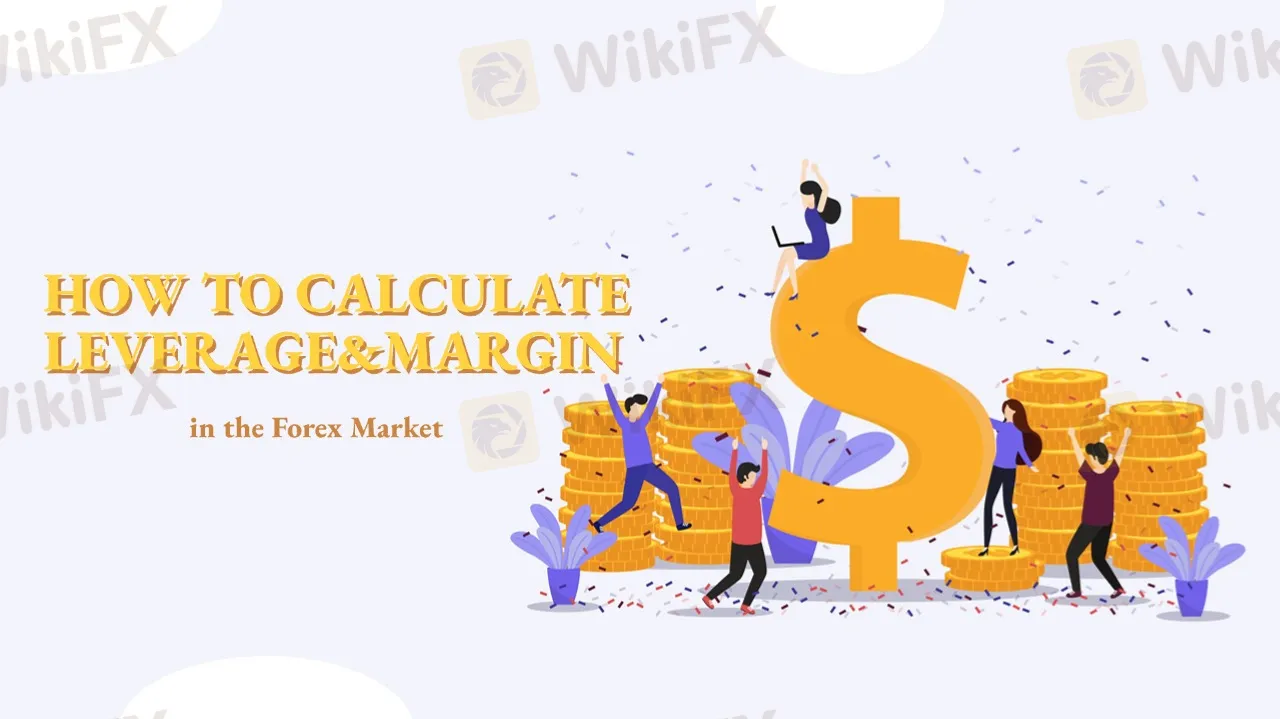How to Calculate Leverage and Margin in the Forex Market
Abstract:Leverage amplifies both potential profits and risks. Understanding how to calculate leverage and margin helps traders manage risks and avoid forced liquidation.

Leverage allows traders to control a larger trading position with a smaller amount of capital, effectively borrowing funds from a broker. Margin, on the other hand, is the amount of money required to open and maintain a position, serving as collateral. It is usually expressed as a percentage of the total trade value.
There are two types of margin:
Used Margin: The amount of capital currently allocated to maintain open positions.
Available Margin: The remaining capital in the account that can be used to open new positions.
For example, if a trader has a total account balance of $5,000 and $3,800 is used margin, then $1,200 remains available for new trades.
How to Calculate Leverage and Margin
The margin calculation formula is:
Margin= (Trade Volume×Contract Size×Asset Price)/Leverage
For example, if a trader wants to buy 3 lots of EUR/USD at an asset price of $1.10 with a leverage of 30:1, the required margin would be:
(3×100,000×1.10)÷30=11,000 USD
Another crucial metric is the margin level, which is calculated as:
Margin Level=(Equity/Used Margin)×100
A higher margin level indicates more available margin relative to borrowed funds, reducing risk. If the margin level falls below 100%, a margin call will be triggered, warning the trader to deposit more funds or reduce positions. If the margin level drops to 50%, the system may forcefully close positions to prevent further losses.
Using Leverage Wisely to Manage Risk
Leverage is a double-edged sword—it can magnify profits, but it also increases the risk of significant losses. For example, if a trader has $1,000 in their account and uses 100:1 leverage, they can control a $100,000 position. However, a 1% unfavorable price movement could wipe out their entire capital.
Therefore, it is crucial to use leverage cautiously. Beginner traders are advised to start with lower leverage (e.g., 10:1 or 20:1) and use stop-loss orders to limit risk. Practicing with a demo account can also help traders gain experience with margin trading before committing real capital.

Read more

Broker Comparsion: FXTM vs AvaTrade
FXTM and AvaTrade are two well-established online brokers offering forex and CFD trading across global markets. Both enjoy strong reputations and high ratings on WikiFX—FXTM holds an AAA overall rating, while AvaTrade scores 9.49/10, indicating they’re regarded as reliable choices by the community. However, since brokers have great reputation in the industry, how do we know which one is more suitable for individuals to invest in? Today's article is about the comparison between FXTM and AvaTrade.

Pi Network: Scam Allegations Spark Heated Debate
A whistleblower report has surfaced, casting doubt on the legitimacy of Pi Network, alleging psychological manipulation, opaque operations, and potential financial exploitation. What is your take on this?

Webull Listed on Nasdaq Following SPAC Merger with SK Growth
Webull and SK Growth complete their business combination, with Webull now trading under the ticker “BULL.” App hits 50 million downloads worldwide.

UN Warns Asian Scam Operations are Spreading Worldwide
UN report reveals Asian scam operations expanding globally, targeting Africa, Latin America with cyberfraud, generating billions amid crackdowns.
WikiFX Broker
Latest News
Love, Investment & Lies: Online Date Turned into a RM103,000 Scam
Broker’s Promise Turns to Loss – Funds Disappear, No Compensation!
Broker Took 10% of User's Profits – New Way to Swindle You? Beware!
Pi Network: Scam Allegations Spark Heated Debate
Broker Comparsion: FXTM vs AvaTrade
Account Deleted, Funds Gone: A New Broker Tactic to Beware Of?
StoneX Subsidiary, Gain Global Markets Bermuda, Penalized for Trading Misconduct
El Salvador and U.S. Launch Cross-Border Crypto Regulatory Sandbox
The Instagram Promise That Stole RM33,000
Coinbase Launches Bitcoin Yield Fund for Institutional Investors
Rate Calc
